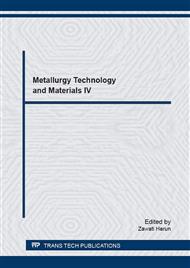p.83
p.88
p.93
p.98
p.103
p.111
p.116
p.121
p.127
Holographic Storage Properties of Photochemical SiO2-Nanoparticles Material for Visualization News Features
Abstract:
The excellent photochemical properties of photopolymer material have made them become the hot spot of current for visualization news holographic storage. However, the shortcomings of common photopolymer materials such as exposure shrinkage and limited refractive index modulation affect the reading and writing properties of their holographic storage. In this thesis, the theoretical basis of the fact that organic/inorganic composite materials possess was built, and the advantages of anti-shrinkage and increasing the refractive index modulation of materials was carried out work on organic/inorganic photopolymer materials blended with SiO2-nanoparticles.
Info:
Periodical:
Pages:
103-107
Citation:
Online since:
August 2016
Authors:
Price:
Сopyright:
© 2016 Trans Tech Publications Ltd. All Rights Reserved
Share:
Citation:


